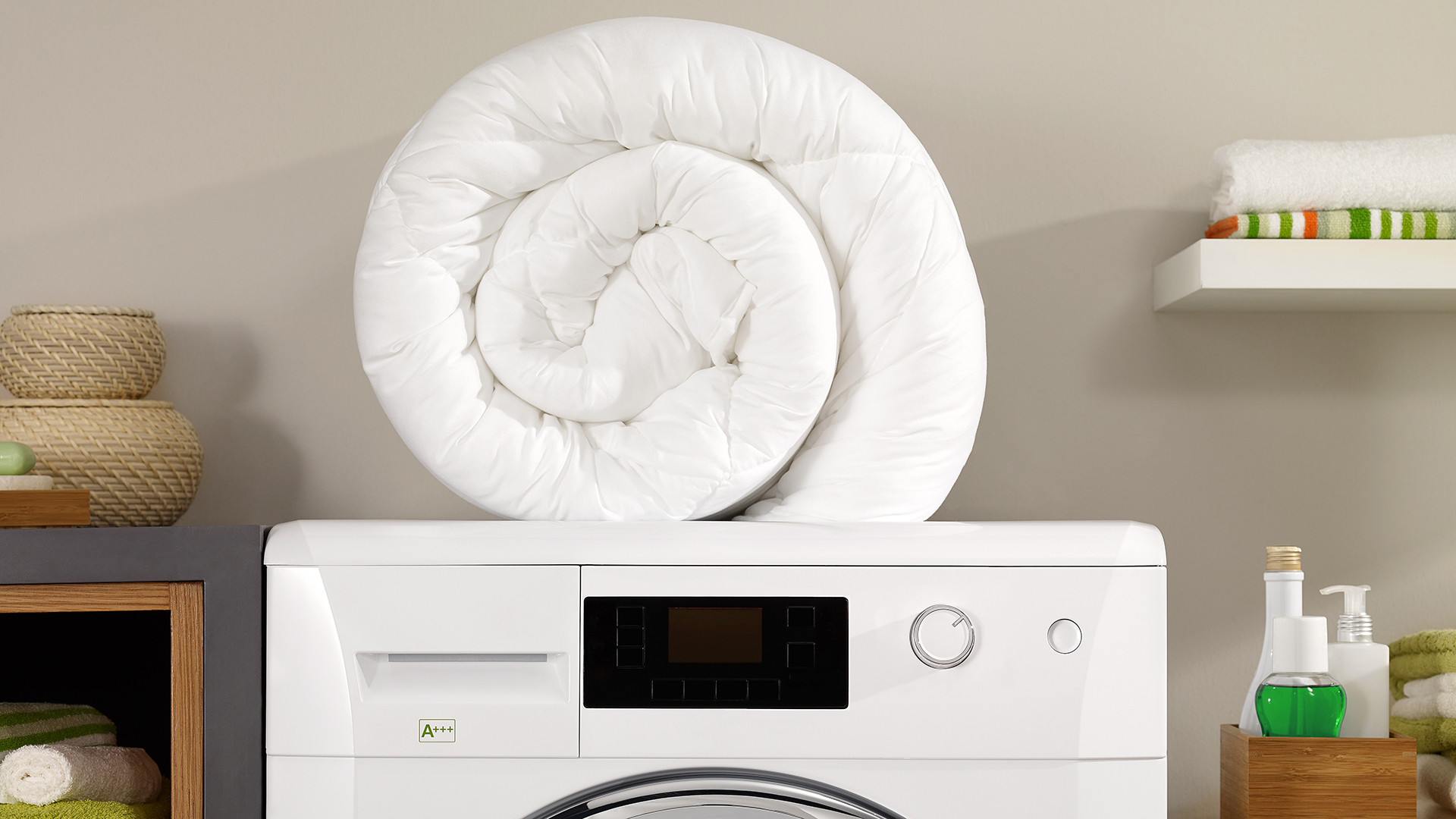How to dry a down comforter
Make sure your bed is kept sanitary

Washing heavy-duty bed linen can be a daunting task to undertake, and learning how to dry a down comforter can be a feat in itself. Down feathers make washing and drying things a little bit more difficult, as you don't want to cause any damage that would result in having to repurchase.
The good news is you can wash a down comforter yourself, so once that is out of the way, then drying it is the final step before you have a clean and fluffy companion to cozy up with. We spoke to Sleep Expert and CEO of MattressNextDay, Martin Seeley, who gave us some top tips on how to dry a down comforter to avoid any damage. So, as long as you have one of the best dryers, you're set to go ahead and dry off your down comforter so that it's ready for bed.
What is the best dryer setting for a down comforter?
If you want to dry your down comforter in a dryer, then the best guidance is to go low and slow. Choosing the lowest temperature possible will help to keep the comforter as fluffy as possible, which, after all, is what you want in bed linen. A low heat will also prevent the down from scorching.
Martin Seeley, Sleep Expert and CEO of MattressNextDay says, "Overall, drying a down comforter requires gentle handling and patience. Take your time and be careful to avoid damaging the feathers."
It's also a good idea to stop the dryer from time to time to give the comforter a shake. This will help to distribute the feathers evenly and prevent any lumps from forming.
This might be a lengthy process, but drying a down comforter in increments will guarantee better results. If you remove it before it's completely dry, then you have a higher chance of mildew forming, which is bad for your health and would result in you having to purchase a costly replacement.
How to dry a down comforter
We spoke to Sleep Expert and CEO of MattressNextDay, Martin Seeley, for guidance on how to dry a down comforter best. They're large items and often expensive, so we thought it was important to get advice straight from the experts. Simply follow these step-by-step tips, and your comforter will be dry, fluffy, and ready to sleep under.
1. Check the care label
Sign up to receive the latest news, reviews, buying guides and deals direct to your inbox
Just like with your clothes, it's important to check the care label on your down comforter first. Some may say they should only be professionally cleaned, while others might require air drying.
2. Use a large-capacity dryer
Martin Seeley commented, "If your comforter can be dried at home, use a large-capacity dryer to ensure that it has enough room to move around and fluff up. A commercial-sized dryer at a laundromat can also be a good option."
3. Add dryer balls
You might've found yourself questioning, 'Do dryer balls work?' and wondering what they're used for - luckily, drying a comforter is the perfect use. Martin says that adding a dryer ball will "help fluff up the feathers and prevent clumping" so that your comforter is evenly distributed.
4. Select a low heat setting
Just like we mentioned above, a low heat setting will be best for drying a down comforter. This prevents the feathers from burning and keeps them nice and fluffy.
5. Rotate and shake the comforter
As well as taking it slow with the heat, it's good to periodically remove the comforter to give it a good shake.
Buying Guides
Best washer dryer combos 2025: all-in-one solutions for your laundry needs, chosen by experts
Best hair dryers: Top-rated blow dryers for all budgets
Reviews
LG DLEX8600BE 7.3 Cu. Ft. Smart Electric Dryer review: over 24 high-tech drying programs
Asko T411VDW 5.1 cu. ft. Stackable Electric Dryer review: ideal for lighter loads
Revlon Perfect Heat Fast Dry Travel Styler review
"Check the comforter every 30 minutes or so to make sure that it is drying evenly. Rotate the comforter and fluff it up to ensure that all of the feathers are being dried", says Martin.
6. Air dry to finish
Martin advises to finish up drying your down comforter by "removing it from the dryer and finish air-drying it."
"Hang it over a clothesline or lay it flat on a clean surface to finish drying completely. You should also avoid direct sunlight or heat sources."

Holly, the former Features Editor of Top Ten Reviews, brings a wealth of experience in creating practical home content. With a background in freelance writing and product copy, she is dedicated to producing thorough features that help readers make the most of their homes and gardens.
- Martin SeeleySleep Expert and CEO of MattressNextDay
